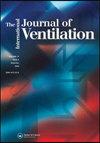单室热水回收通风机组的多目标设计
IF 1.5
4区 工程技术
Q3 CONSTRUCTION & BUILDING TECHNOLOGY
引用次数: 1
摘要
摘要介绍了单室通风机组的设计改进。这种通风系统有许多优点,但也存在一些缺点。第一个是声干扰。由于设备直接安装在房间内,风扇的噪音可能会造成不适。此外,在寒冷或温带气候下,可能会出现凝结或霜冻。然后应该实施专门的管理。最后,由于系统不是集中式的,不同单元之间需要进行通信,以保证系统的全局效率。一个由几个工业合作伙伴和研究机构组成的团队在“沉默”项目的框架内解决上述问题。该项目分为三个主要任务。为了正确降低声发射级(i),我们对现有机组发出的噪音进行了频谱分析,发现噪音干扰的主要原因是1千赫以下的频率。根据这一分析,设想了主动和被动的降噪解决方案,显示出令人鼓舞的趋势。下一个研究方向是通风装置的交换器(ii)。构成材料是一种允许湿度传递(蒸汽或液体)的新型多孔膜。对这种特殊的换热器进行了数值模拟,以预测其性能。最后考虑的问题是针对分散单元的具体情况优化通风和控制策略(iii),利用传感器和物联网(IOT)等最新通信技术在分散单元之间建立通信并确保其一致的控制。这里提出的三个方面的关联应该导致多功能和高效的通风系统。本文章由计算机程序翻译,如有差异,请以英文原文为准。
Multi-objective design of single room ventilation units with heat and water recovery
Abstract The present paper describes the design improvement of a single-room ventilation unit. This ventilation system presents many advantages, however, several drawbacks exist. The first one is the acoustic disturbance. As the facilities are directly installed within the rooms, the fans’ noise may create discomfort. Furthermore, in the cold or temperate climates, condensation or frost may appear. A dedicated management should then be implemented. Finally, as the system is not centralized, communication between the different units is required to ensure the global system efficiency. A team of several industrial partners and research institutes tackles the above-mentioned issues in the frame of the “Silenthalpic” project. The project is split in three major tasks. To correctly reduce the sound emission level (i), a spectral analysis of the noise emitted by an existing unit was undertaken, revealing that frequencies under 1 kHz are mainly responsible for the noise disturbance. From this analysis, active and passive solutions for noise reduction are envisaged, showing encouraging trends. The next research aspect is the exchanger of the ventilation unit (ii). The constituting material is a new porous membrane allowing the humidity transfer (vapor or liquid). This specific exchanger is numerically modelled to predict its performances. The last considered problematic is the optimization of the ventilation and control strategies for the specific case of decentralized units (iii), taking advantage of sensors and recent communication technologies like IOT (Internet Of Things) to establish communication between decentralized units and ensure their consistent control. The association of the three aspects presented here should then lead to versatile and efficient ventilation systems.
求助全文
通过发布文献求助,成功后即可免费获取论文全文。
去求助
来源期刊

International Journal of Ventilation
CONSTRUCTION & BUILDING TECHNOLOGY-ENERGY & FUELS
CiteScore
3.50
自引率
6.70%
发文量
7
审稿时长
>12 weeks
期刊介绍:
This is a peer reviewed journal aimed at providing the latest information on research and application.
Topics include:
• New ideas concerned with the development or application of ventilation;
• Validated case studies demonstrating the performance of ventilation strategies;
• Information on needs and solutions for specific building types including: offices, dwellings, schools, hospitals, parking garages, urban buildings and recreational buildings etc;
• Developments in numerical methods;
• Measurement techniques;
• Related issues in which the impact of ventilation plays an important role (e.g. the interaction of ventilation with air quality, health and comfort);
• Energy issues related to ventilation (e.g. low energy systems, ventilation heating and cooling loss);
• Driving forces (weather data, fan performance etc).
 求助内容:
求助内容: 应助结果提醒方式:
应助结果提醒方式:


